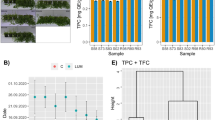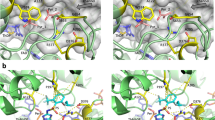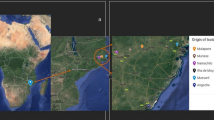Abstract
IN view of the widespread use of hormone-type herbicides on mixed stands of crop plants containing clover as an essential constituent, it would appear to be of considerable importance to determine the effect of these substances on the growth of the clover nodule-forming organism. This is particularly true of the phenoxybutyric compounds which have been recommended for use as herbicides where clover is present, since they have been shown by Wain1 and other workers to have no harmful effect on clover due to the latter's lack of the β-oxidizing enzyme system.
This is a preview of subscription content, access via your institution
Access options
Subscribe to this journal
Receive 51 print issues and online access
$199.00 per year
only $3.90 per issue
Buy this article
- Purchase on SpringerLink
- Instant access to full article PDF
Prices may be subject to local taxes which are calculated during checkout
Similar content being viewed by others
References
Wain, R. L., Agric. Rev., 1 (1955).
Fred, E. B., Baldwin, I. L., and McCoy, E., “Root Nodule Bacteria and Leguminous Plants” (Madison, 1932).
Author information
Authors and Affiliations
Rights and permissions
About this article
Cite this article
FLETCHER, W. Effect of Hormone Herbicides on the Growth of Rhizobium trifolii. Nature 177, 1244 (1956). https://doi.org/10.1038/1771244a0
Issue date:
DOI: https://doi.org/10.1038/1771244a0
This article is cited by
-
Effect of two granular nematicides on growth and nodulation ofArachis hypogea L.
Plant and Soil (1982)
-
Effect of several herbicides on bacterial populations and activity and the persistence of these herbicides in soil
Plant and Soil (1970)
-
Einfluss der 2,4-Dichlorphenoxyessigsäure auf Wachstum, Knöllchenbildung und Stickstoffgehalt vonVicia Faba
Planta (1964)



